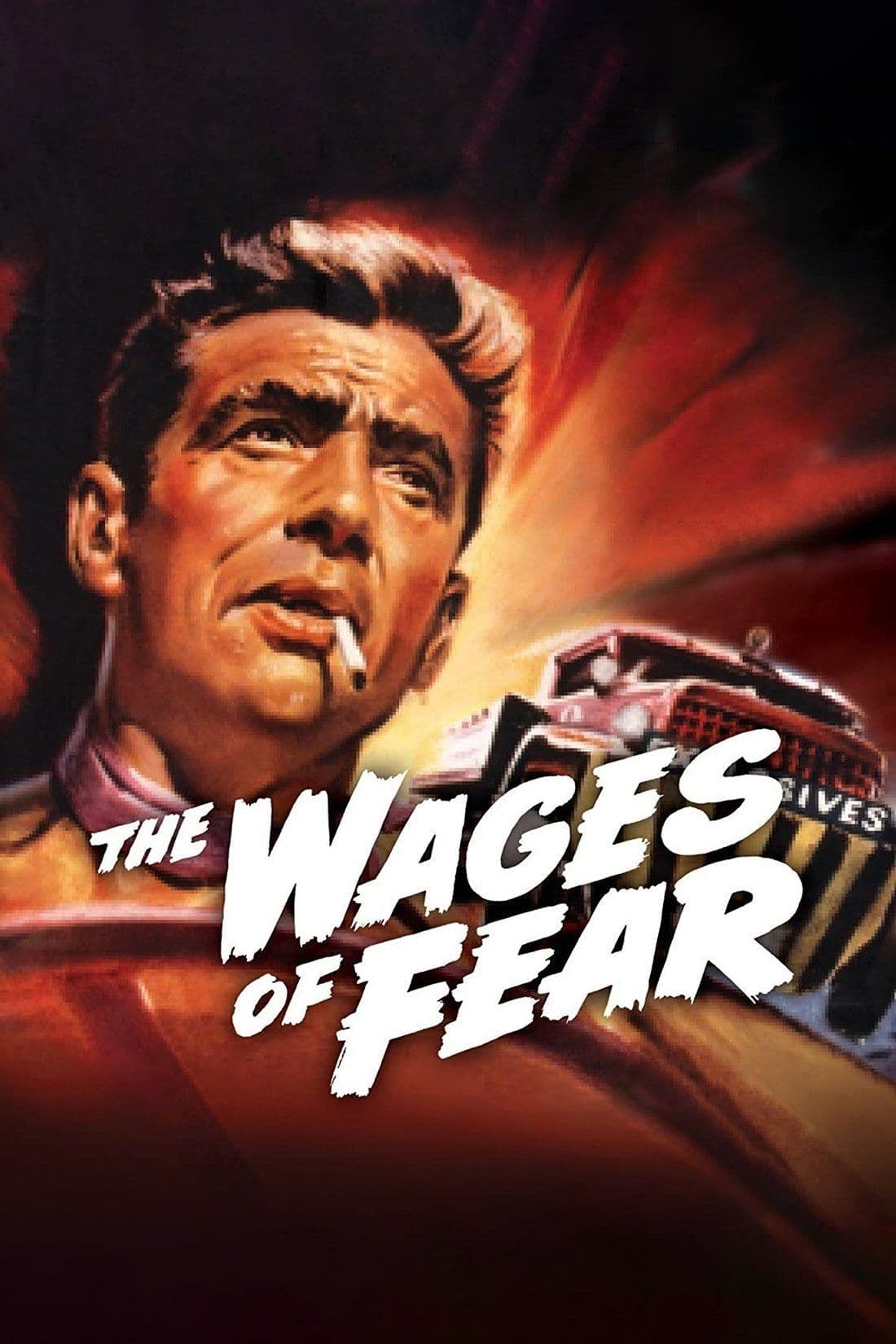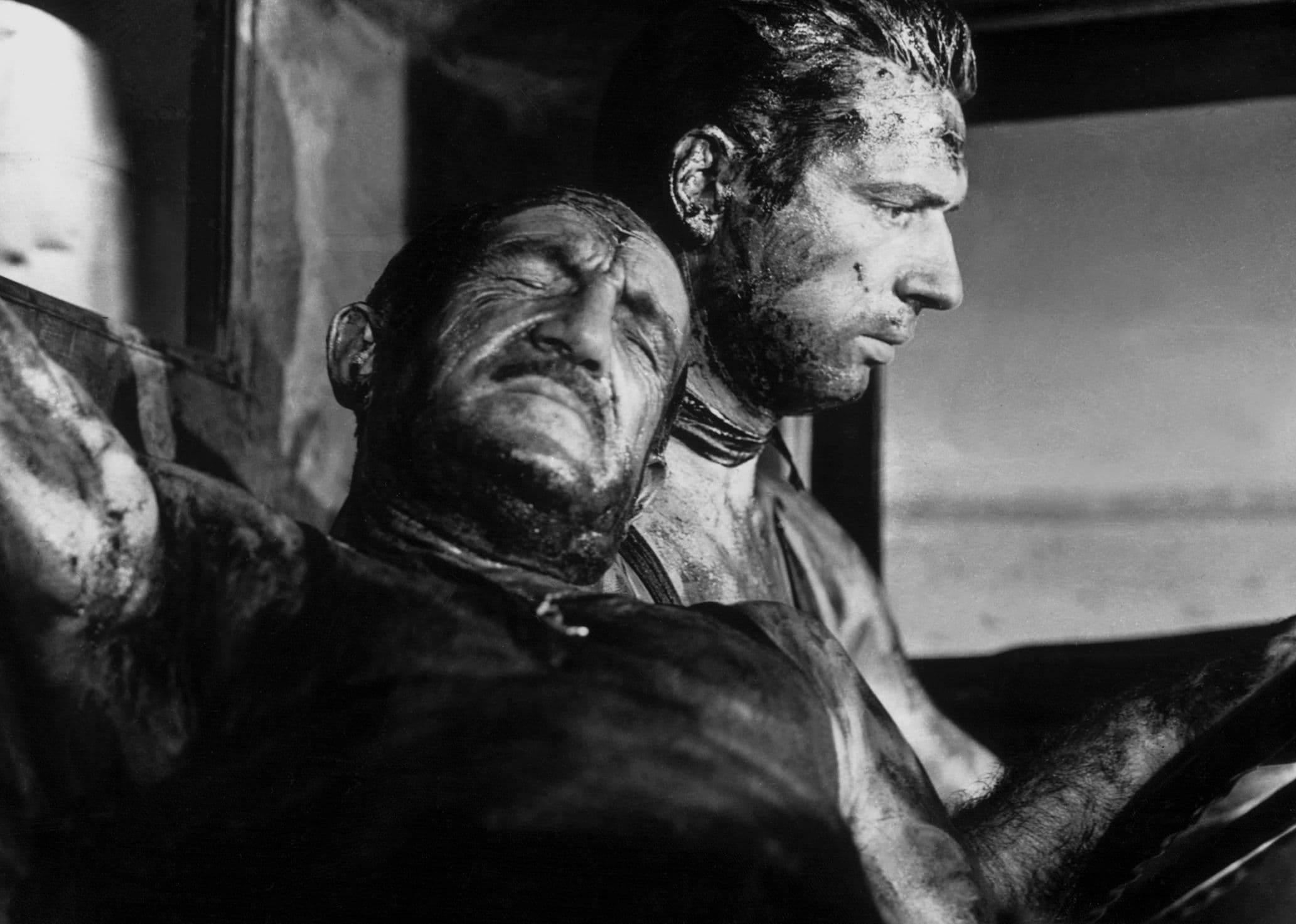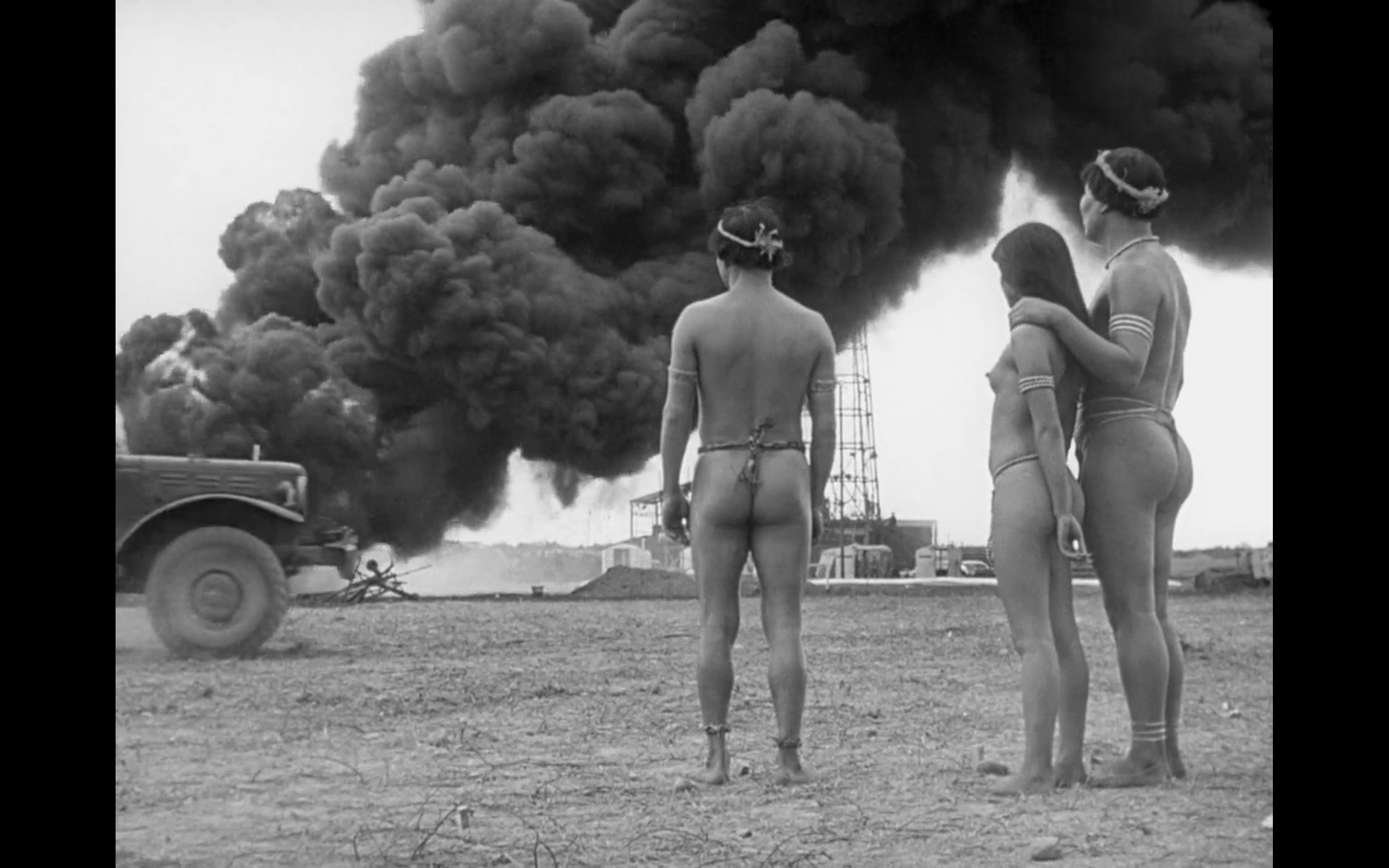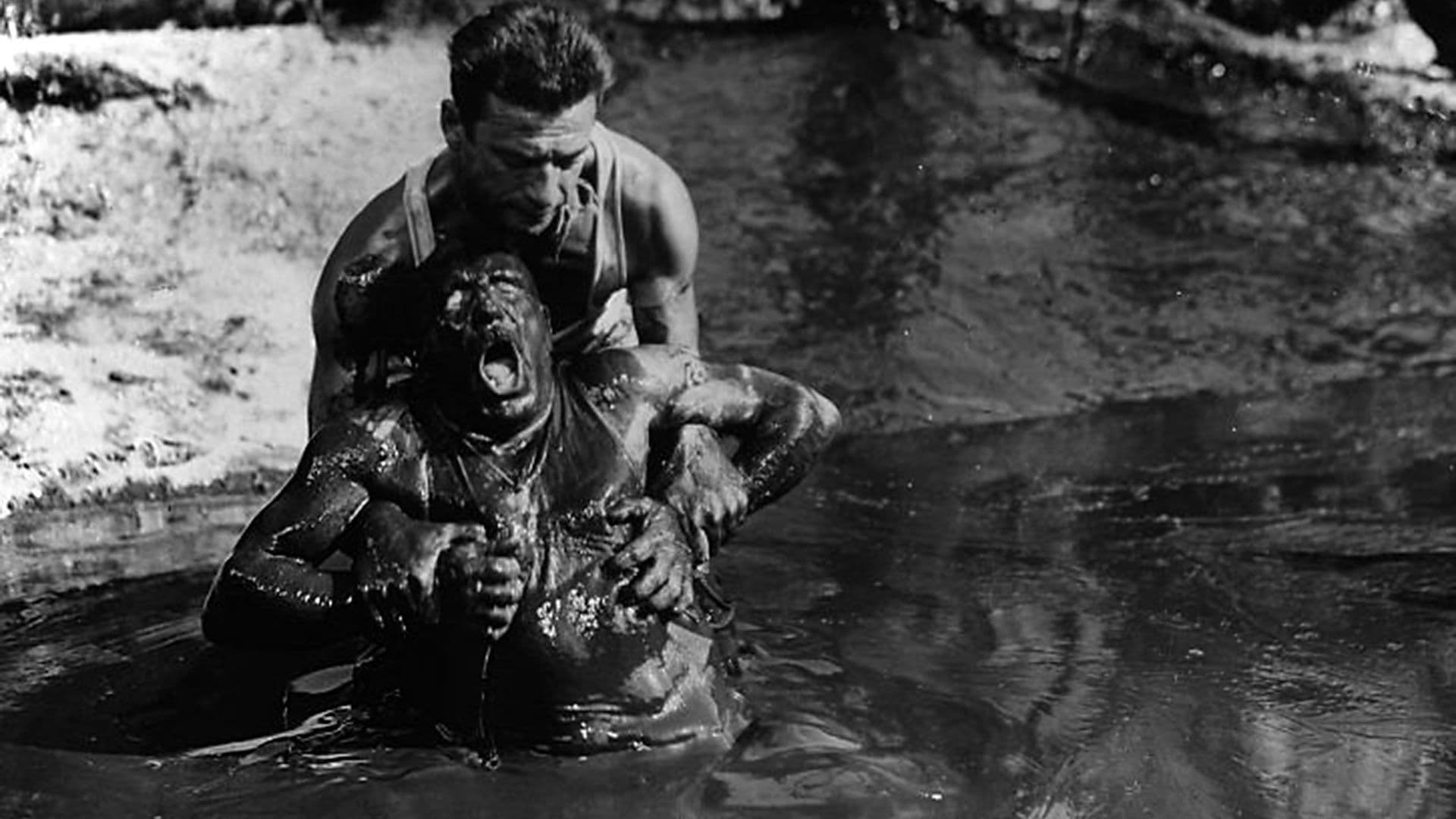
The Wages of Fear
1953
Rate this movie
Average: 5.00 / 5
(1 votes)
Director
Clouzot's film is truly unique, a great visionary talent in imprinting on film an analytical spectrum of reality through a slight focal distortion tinged with the absurd. His ability is not merely to create tension, but to dig deep into the human soul, revealing the fragilities and most recondite urges hidden beneath the veneer of civilization. The Wages of Fear (Le Salaire de la Peur), far from being a mere action thriller, thus proves to be a relentless descent into the abysses of the human psyche, an exploration of fear, despair, and morality at its breaking point, all wrapped in a veil of existential nihilism that was so dear to the French director.
The story is that of four men, two French, one Swedish, and one Italian, who embark on a mission nothing short of dangerous in a remote South American town. That town of Las Piedras, dusty and suffocating, becomes almost an earthly purgatory, a limbo from which one cannot escape unless by accepting a Faustian pact with danger. The protagonists – the cynical and disenchanted Mario (Yves Montand), the fragile and terrified Luigi, the wise and taciturn Bimba, and above all the aging and declining Jo (masterfully played by Charles Vanel), once a successful man, now a pathetic wreck – are outcasts, men without a future, stuck in a forgotten corner of the world. Transporting a cargo of nitroglycerin on two trucks to extinguish a burning oil well, 600 km away, becomes their only, desperate way out. It is hunger, boredom, and desperation that push them to accept the assignment, transforming their already precarious lives into a commodity, a "wage of fear" paid at the price of their very existence.
Clouzot is skilled at tracing the profile of each man and extracting from it a mask bloated with mumbled irony. But these "masks" of superficial cynicism or forced bravado progressively crack under the inexorable pressure of the imminent threat. Clouzot is not interested in heroes, but in naked men, stripped of all rhetoric, who show their pettiness, their deepest fears, their rare, but intense, sparks of humanity. The relationship between Mario and Jo, in particular, is a microcosm of dependence and resentment, a morbid bond that reveals itself in all its toxicity and complexity as the journey proceeds. Vanel, in a performance that remains in the history of cinema for its brutal realism, embodies physical and moral degradation with disarming truth, his imposing figure contracting into a tangle of sweat and terror, transforming the boastful macho into a pitiful and almost repugnant figure.
The film is an iconographic treasure trove with cinematography nothing short of splendid that portrays the Amazonian landscape in its lush beauty. Armand Thirard's black and white cinematography does not merely portray, but immerses the viewer in this hostile environment. Every shot is saturated with an oppressive heat, with dust that settles on everything, with shadows that stretch out menacingly, making the characters' sense of claustrophobia and isolation palpable. The landscape, though "lush" in its wild nature, is never a consoling element; on the contrary, it becomes an impassive co-protagonist, a primitive arena where man is a fragile and vulnerable intruder, forced to contend with a nature indifferent to his fate. The beauty of the jungle, thus understood, is a brutal, almost mocking beauty, which violently contrasts with the sordid reality of the struggle for survival.
The pace is frenzied from beginning to end; Clouzot never takes his foot off the accelerator, driving us headlong towards the film's focal point. Everything follows at breakneck speed, each moment is directly swallowed by the next; Clouzot holds every second in suspense, until the explosion of the tremendous drama. Clouzot's mastery in handling suspense is here elevated to an art form, a paradigm for every thriller that followed. It is not suspense made of gratuitous plot twists, but of a constant, almost unbearable tension, meticulously built through visual and sound details, silences laden with premonitions, and sparse but incisive dialogues. Every obstacle – a bumpy road, a mud puddle, a blind curve, a shaky bridge, or the ingenious sequence of an enormous rock's explosion – is not just a physical challenge, but a catalyst for fear, a pretext to exacerbate the men's already strained psyche. The camera becomes an relentless eye, lingering on sweat-soaked faces, on hands trembling on the steering wheel, on the unstable liquid swaying in the tanks, making the viewer both complicit and a victim of that same agony. It is a narrative and directorial tour de force that, for its intensity and raw realism, anticipates by decades the visceral brutality of certain action cinema, while maintaining a profound psychological resonance. Many directors, from William Friedkin with his "Sorcerer" (an evident and almost obligatory remake) to much of survivalist cinema, have drawn heavily from this lesson in claustrophobia on wheels.
From a novel by Arnaud that went almost unnoticed in its time, Clouzot was able to extract the quintessence. Georges Arnaud's novel, "Le Salaire de la Peur," though the source, was transfigured by Clouzot into a work that transcended the mere adventurous plot to become a fierce allegory on alienation and the commodification of the human being within the capitalist system. The oil company, presented as an omnipotent and anonymous entity, is a symbol of the cold indifference of economic power towards individual life. The film is, ultimately, a bold reflection on human dignity in extreme circumstances: what is a life worth? How much are we willing to risk for a promise of salvation, for a slice of wealth that might never be claimed? Violence is not only physical but also systemic, a violence that consumes souls long before destroying bodies, and which mirrored the deep wounds and disillusionment of post-war Europe.
A true treasure of French cinema that we strongly recommend you not miss. Clouzot offers no easy catharses or comforting solutions; his is a cinema that digs into the heart of darkness, leaving the viewer with a sense of bitter awareness. For its relentless tension, its masterful direction, the unforgettable performances of its cast, and the depth of its themes, The Wages of Fear has rightly earned a place of honor in the cinematic pantheon, being awarded both the Palme d'Or at the Cannes Film Festival and the Golden Bear in Berlin in the same year, a recognition almost unique in film history. It is a powerful and still unsettling warning about the precarious nature of existence and the ruthless logic of survival, a timeless masterpiece that continues to shake and question the viewer with the same disruptive force as that explosive cargo that defines its narrative core.
Gallery




Comments
Loading comments...